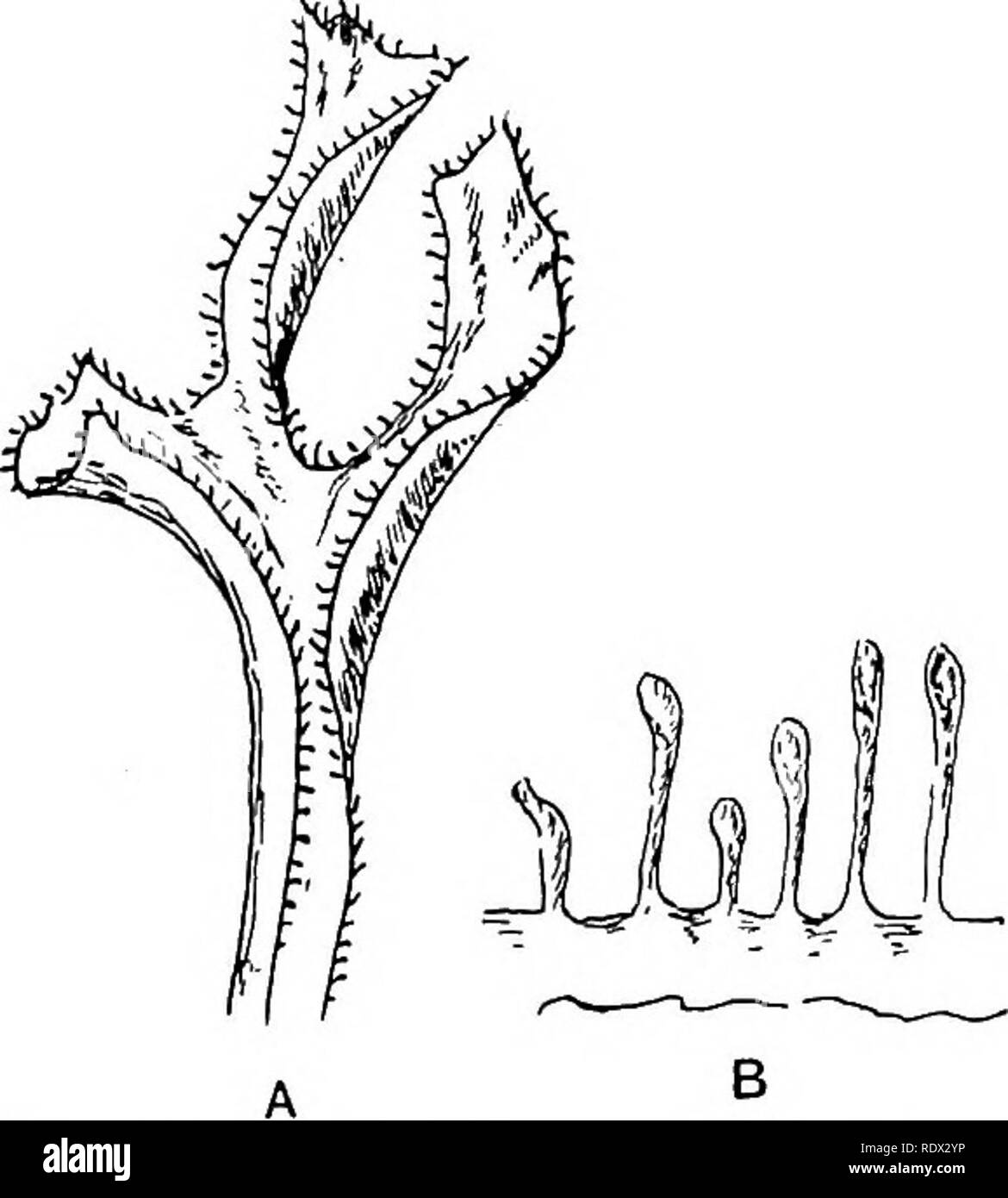. Lichens. Lichens. 196 REPRODUCTION In size they vary from such minute bodies as those in Parmelia exasperata which measure 25-35 A'' i" diam., up to nearly i mm. in Lobaria laetevirens. As a rule, they range from about 150/i to 400 yu, across the widest part, and are generally rather longer than broad. They open above by a small slit or pore called the ostiole about 20 yii to 100 /x wide which is frequently dark in colour. In one in- stance, in Icmadophila aeruginosa, Nien- burg' has described a spermogonium with a wide opening, the spermatiophores being massed in palisade formation alo

Image details
Contributor:
The Book Worm / Alamy Stock PhotoImage ID:
RDX2YPFile size:
7.1 MB (180.1 KB Compressed download)Releases:
Model - no | Property - noDo I need a release?Dimensions:
1500 x 1666 px | 25.4 x 28.2 cm | 10 x 11.1 inches | 150dpiMore information:
This image is a public domain image, which means either that copyright has expired in the image or the copyright holder has waived their copyright. Alamy charges you a fee for access to the high resolution copy of the image.
This image could have imperfections as it’s either historical or reportage.
. Lichens. Lichens. 196 REPRODUCTION In size they vary from such minute bodies as those in Parmelia exasperata which measure 25-35 A'' i" diam., up to nearly i mm. in Lobaria laetevirens. As a rule, they range from about 150/i to 400 yu, across the widest part, and are generally rather longer than broad. They open above by a small slit or pore called the ostiole about 20 yii to 100 /x wide which is frequently dark in colour. In one in- stance, in Icmadophila aeruginosa, Nien- burg' has described a spermogonium with a wide opening, the spermatiophores being massed in palisade formation along the bottom of a cup-like structure. c. ColourofSpermogonia. Though usually the ostiole is visible as a darker point than the surrounding tissue, sper- mogonia are often difficult to locate un- less the thallus is first wetted, when they become visible to slight magnification. They appear as black points inmany/'ar^^^/zW, /'^^-*'^^'^^.-^^^'^'^^'^'^^^, etc., though even in these cases they are often brown when moistened. They are dis- tinctly brown in some Cladoniae, in Nephromium, and in some Physciae; orange-red or yellow in Placodium and concolorous with the thallus in Usnea, Ramalina, Stereocaulon, etc.. Fig. 112. Free spermogonia in spinous cilia of Cetraria istandica Ach. A, part of frond; B, cilia, x lo. D. Structure a. Origin and Growth. The spermogonia (or pycnidia) of lichens when mature are more or less hollow structures provided with a distinct wall or " perithecium, "- sometimes only one cell thick and then not easily de- monstrable, as in Physcia speciosa, Opegrapha vulgata, Pyrenula nitida, etc. More generally the " perithecium " is composed of a layer of several cells with stoutish walls which are sometimes colourless, but usually some shade of yellow to dark-brown, with a darker ostiole. The latter, a small slit or pore, arises by the breaking down of some of the cells at the apex. After the expulsion of the spermatia, a new tissue is formed